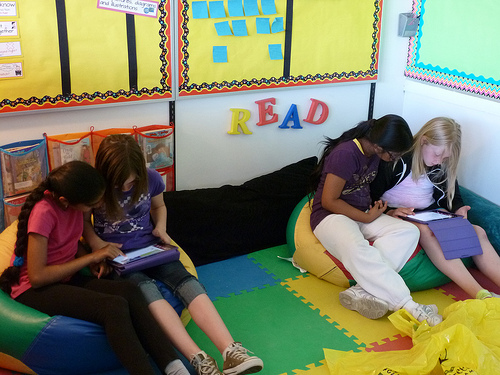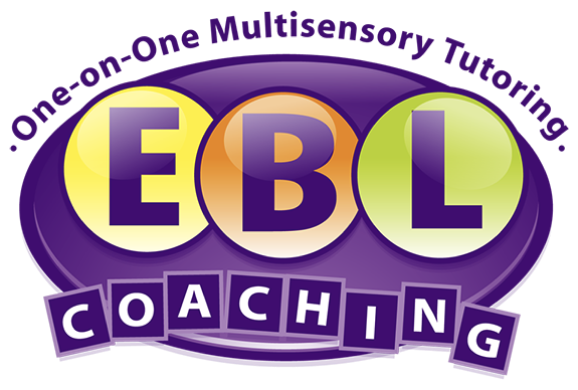
Help Your Visual Learner Succeed In School

Tips and tricks to help visual learners capitalize on their strengths
In theory, visual learners should thrive on the Common Core standards. These standards emphasize skills such as problem-solving and critical thinking–areas that are typically strengths of visual learners–and place less emphasis on rote memorization and straightforward calculations. Yet while visual learners often ace these “right-brain,” Common Core-like tasks, they tend to have difficulties with the more linear aspects of school, such as memorizing information, spelling words, and making lists. Despite the shifting trend in teaching, these “left-brain” tasks continue to be integral components of school instruction. Help your visual learner excel in school with the ideas detailed below:
Teach Visualization Techniques
When visual learners read, they tend to process and remember information better when they can “see” or visualize it. To teach this visualization skill, have your child read a basic sentence out loud, such as “Three boys sat at the campfire.” Ask him to try to form a picture of this sentence in his mind, then ask prompting question to help him elaborate upons his image, such as: Who? What? Where? What color(s)? How many? How big/small? You can also ask your own elaboration questions, such as, in this case, where he thinks the boys were and how they knew each other. You can ask him to describe the colors and sounds in his image, what the boys were doing at the campfire (Roasting marshmallows? Telling ghost stories?), and perhaps ask him to describe physical descriptions of each boy. The more vivid an image he can create in his mind, the more likely he will be to remember the information. Later, try this same exercise with full paragraphs and stories.
Highlight Information
To further help your child process information, encourage her to use color-coded highlighting techniques when reading both expository and narrative texts. For example, for expository text, teach her to highlight the topic (one, two, or three words describing the passage) in blue, the main idea (what the author is saying about the passage) in green, and the important details (important information describing the main idea) in yellow. She should read the passage first, then go back and highlight the key information. For narrative text, create a color-coded key before she reads, which correlates story elements to specific colors, then have her highlight new characters in, say, orange, new places in yellow, and plot events in pink. This organized, color-coded highlighting system will help her to learn and retain information that she reads.
Color Code Belongings
To help your visual learner better organize his belongings, help him create a color-coded system for his school materials. For instance, he might choose green for science and use a green folder, green notebook, and green index tab in his binder, all for science. He can even use green flash cards for studying science. Likewise, he may choose blue for math, yellow for English, and so on. The key is consistency.
Learn Vocab!
As students read, they inevitably come across vocabulary words they may not know. Rather than skipping over or guessing at these unknown words, try this visual-based flash card strategy. To start, have him write the word on the front of the card and the definition (in his own words) on the back. Under the definition on the back side, he should draw a picture to help him remember the meaning. For example, if the word is pinnacle, he can write the word on the front and the definition on the back, and then perhaps draw a picture of a mountain with a pin sticking out of it at the top. Alternatively, he can look for photos in magazines that represent the word, like benevolent (he finds a picture of someone acting sympathetic and friendly) or collaborate (he finds a picture of two people working together).
Visual Note-taking
Teach your child to create visual diagrams for both independent and in-class note-taking. To do so, for independent note-taking, first have him identify the topic of the passage he will be reading about (i.e., Word War I). Have him draw a circle in the middle of a sheet of paper and write “World War I” inside the circle. Next, have him identify the important details describing the topic and write them in his own words inside circles that branch out from the topic. Then he can create sub-branches, or circles that branch out of the important detail circles, containing information that supports the important details. He should continue creating this type of visual “tree” until he has finished reading the passage or textbook section. He can then color code the topic bubble in the middle using one colored highlighter, the important details using a second colored highlighter, and the supporting details using a third color. He can use this same type of visual note-taking diagram for taking in-class notes.
Visual learners often bear many strengths–they are typically creative, artistic, and perceptive. Yet, in school, lessons are not always catered to visual learners. Teach your child these strategies and encourage her to use them consistently; she will soon become a confident and successful student.
